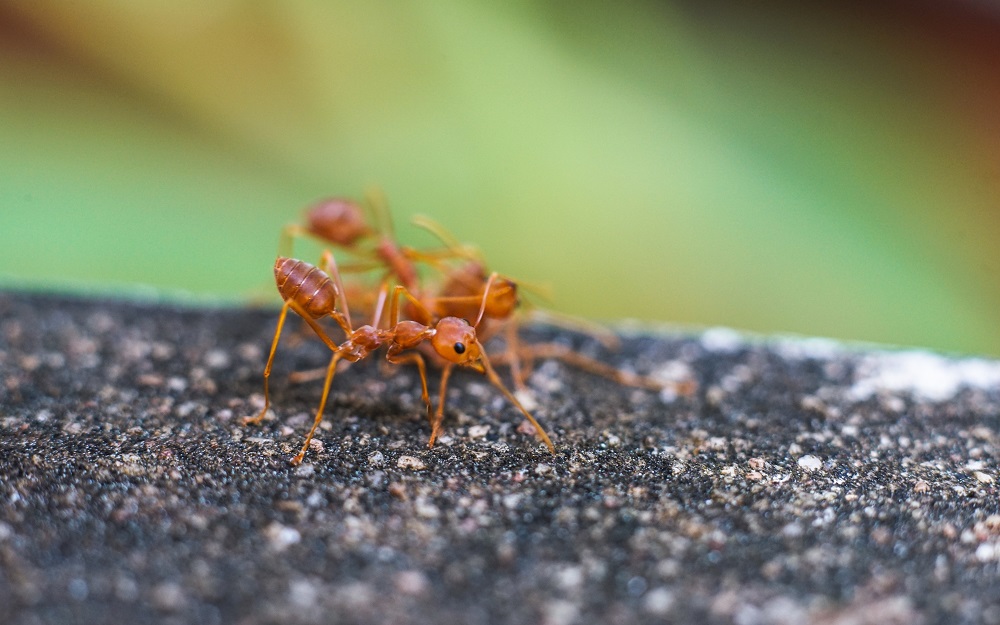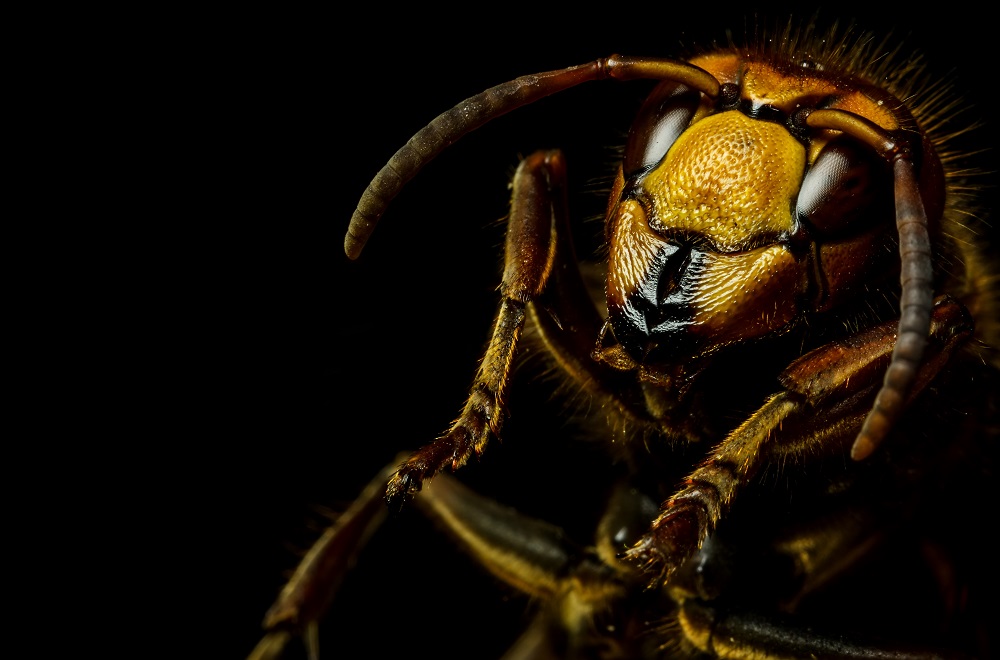Forget about snakes and scorpions! These are the most dangerous insects in the world, so if and when you see them RUN!
In most documentaries and biology books, many wild animals are considered dangerous near humans. However, deadly insects are rarely mentioned. I wonder why. After I did quite a bit of research on this topic, I decided, what if I also write a more in-depth article about it?
Stop focusing on the size of grizzly bears and great white sharks; insects present the greatest threat to human safety worldwide! Because they consume vertebrate blood, many of these dangerous insects are well-positioned to spread harmful bacteria, viruses, and parasites from one victim to another and frequently from animal to human.
One thing is for sure: size doesn’t matter, and as the title says, “small but deadly. In the following lines, you will learn more about these dangerous insects, including where to find them and the extent of their damage.

Fire ants
Members of the more than 200-species genus Solenopsis, these stinging ants clamp down on their victim’s skin before injecting a potent and even deadly venom that some people are fatally allergic to.
It is known that fire ants feed on livestock, birds, small animals, and other insects. Most people can develop itchy welts from the bite of a fire ant venom. Chest pains and/or nausea may be experienced if you are hypersensitive or allergic to fire ants. In the worst situations, you might enter a coma.
Fire ants are located in many places including America, Australia, China, Japan, Taiwan, and the Philippines. If you think you might be near a fire ant infestation, don’t worry! Just keep an eye out for their mounds in familiar spots like flowerbeds, parks, playgrounds, sports fields, and around tree trunks or fallen objects. Being aware of these areas can help you stay safe and enjoy your outdoor time without getting stung by one of these dangerous insects!
Fun fact about these insects: they are heavy lifters! Fire ants can lift 20 times their weight. Sheesh, that would be like a 100-pound person lifting a ton!
Kissing bugs
Another dangerous insect, the kissing bug, belongs to the Triatominae subfamily of insects and is primarily found on the American continent. It is also found in smaller numbers in some regions of Asia and Africa.
They are primed to spread bacteria, viruses, and parasites between unlucky food sources because, like the other disease carriers on this list, they feed on vertebrate blood. The parasite Trypanosoma cruzi causes Chagas disease which infects about 6-7 million people worldwide, leading to approximately 10,000 fatalities annually.
Fun fact about the kissing bugs: Some of the bigger kissing bugs can grow up to 2.5 inches in length and can take up to 20 minutes to “fill up” on blood!
Blister beetles
Who heard of the blister beetle? Compared to other dangerous insects on this list, this one isn’t exactly deadly for humans. Horses are more likely to be killed by them because they can contaminate the hay or wheat that they consume.
Human skin blistering is caused by a toxin (and defensive agent) secreted by blister beetles called cantharidin. Though most commonly used as an aphrodisiac, it has also been used historically as a folk remedy, believed to be effective against rabies and even warts.
It was a key component of “love potions” in the past. However, the toxin can still kill in sufficient amounts, so its use was a risky venture. A man was imprisoned in the 1950s for the deaths of two women he had seduced with cantharidin-laced candies.

Asian giant hornet
The largest wasp species in the world also referred to as the “murder hornet,” has raised concerns recently because of worries that it might establish itself as an established invasive species in the United Kingdom and the United States.
Although they can be dangerous to humans for the same reason as honeybees, their perceived aggression is what gives them their vicious nickname. However, they are more likely to kill other bees than humans.
Compared to other species, these dangerous insects live only for a year, and the queen giant hornet will begin her life by burrowing into the ground and waiting for winter to end before laying her eggs. When the sterile female hornet larvae reach adulthood, they take over the management of the nest and are fed on tree sap. Interesting, right?
Seeing as dangerous, these hornets aren’t fatal for human beings, mostly because they’re not aggressive until provoked. However, you don’t wish to be stung by this fellah! Even if their venom can’t kill you, it will hurt like hell.
Hunted, fried, and eaten, they are considered a delicacy in Japan. It’s also legal to cook adult wasps, including the stinger, on skewers and enjoy them crunchy. I’m not sure about you, but I’d say no to such a “treat” (giggles).
An interesting fact about giant hornets: The females are the only ones with stingers, which can grow up to 2 inches!
Fleas
Honestly, I can’t think of more dangerous insects than fleas. They’re hard to get rid of because they’re super strong, and they can jump very fast (even faster than an Olympic athlete!). and they’re disease carriers.
We must not overlook the common flea, which is arguably the most well-known historical example of a disease vector when discussing lethal insects that spread illness and death. For those who don’t know, over 25 million people died in Europe in the 14th century as a result of fleas spreading the bubonic plague from infected rodents to humans. Yikes!
And what does humanity do when it finds out about something deadly? They use it as a biological weapon. The Japanese army dropped fleas infected with the plague on Chinese cities during World War II.
Less known facts about fleas: Fleas are unable to see visual images, but they can sense changes in light and dark conditions. Fleas also have no ears but by using sensory hairs, they can sense vibrations.
Mosquito
It may sound hard to believe because we’re used to these dangerous insects, but mosquitoes are the deadliest insects on Earth. They’re worse than fleas! This one sneaky fellow is small but deadly and is the culprit for more human deaths than any other animal.
However, the parasites, bacteria, and viruses that mosquitoes carry and spread through their bites are more lethal than the mosquitoes themselves. In general, mosquitoes spread a wide range of fatal illnesses, such as dengue fever and yellow fever, but malaria, which is only spread by females of the Anopheles genus, has the highest death toll. Recently, in 2021, an estimated 619,000 people died from malaria, a disease brought on by a single-celled parasite that is spread through the blood.
Fun fact about mosquitos: Some people are more, let’s say, “exposed” to mosquito bites than others. There is no scientific explanation for this, but I tend to believe that it has something to do with how sweet or sour each person is. If you’re a sourpuss, then you’re lucky; not even mosquitoes want to bite you!
…psst! You were just getting started, but you blinked twice, and the article was over? Don’t worry! Although I couldn’t include all the deadly insects in one article, I can recommend a comprehensive guide for this topic that will mesmerize you and your juniors while reading it. The book The Deadly World of Bugs, Snakes, Spiders, Crocodiles, and Hundreds of Other Amazing Reptiles and Insects, featuring stunning images and facts, is available on Amazon for just $29.99.
You may also want to read: 17 Critically Endangered Species Worldwide.












